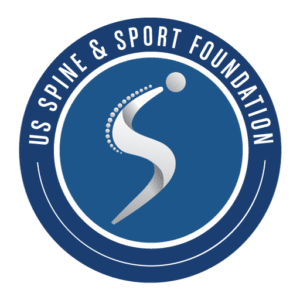A preliminary report on the effect of measured strength training in adolescent idiopathic scoliosis.
Mooney V. Gulick , Pozos R. J Spinal Disord, 2000;13(2):102-7.
The authors studied 12 adolescent patients with scoliosis (10 girls and 2 boys) who were 11 to 16 years old and had curvatures ranging from 20 degrees to 60 degrees. Seven were right thoracic curves and five were thoracolumbar with double curves. When tested on the MedX Torso Rotation Machine, both sides were unequal in their torso rotation strength all patients. Myoelectric activity was asymmetric in both sides and in abdominal and paraspinal muscles of all patients. These asymmetries were corrected completely with torso rotation, which was associated with significant strength gains. Strength gains ranged from 12% to 40%. A 16-year-old girl with a 60 degree lumbar curve progressed and had surgery. None of the remaining patients progressed, and 4 of the 12 had decreases in their curvatures from 20 degrees to 28 degrees. None of the patients used braces during this study.
Adolescent Idiopathic Scoliosis (AIS)
Incidence of AIS
- 80-85% of all cases of scoliosis are idiopathic
- Prevalence of AIS in 10-16 yo: 2 -3 %
Symptoms
- Unless very severe, AIS generally does not result in pain or neurologic symptoms
- Possibly increase in low back pain
- Very severe curves (>90 degrees) may cause respiratory compromise, compression on thoracic organs
Prognosis
- Curves > 45° in those that are still growing, and > 50° in those that are done growing will continue to slowly progress (worsen) over time
Standard Treatment
- Observation
- Still growing (according to Risser sign), curves < 25°
- Finished growing, curves < 50°
- Bracing
- Still growing, curves 25-40°
- Surgery
- Still growing, curves > 45°
- Finished growing, curves > 50°
Exercise Program as an option?
For the treatment of adolescents with idiopathic scoliosis, machine-based exercise training in which progressive loads are gradual and measurable is effective in:
- Reducing / stopping progression of spinal curvature
- Reducing strength asymmetries
- Improving strength
Exercise Program Results
- There were no dropouts in the program
- Spinal Curvature
- None of the patients demonstrated an increase in curvature during this program
- Baseline: 29.5° (range 10° to 45°)
- Conclusion of intervention: 25.1° (minimum decrease 4°, maximum decrease 43°)
Scoliosis
For more info, e-mail us at: vertmooneyfoundation@spineandsport.com
Exercise Protocol for (AIS)
BackStrong Variable Angle Roman Chair
- Progressive exercise warm up
- Variable roman chair
- Flex /extension full range of motion
- Participants perform 1 set to 20 repetitions
- After reaching 20 reps, progress arm and or angle positions.

Exercise can be another treatment option

Progressive Resistance Exercise
- Torso rotational strength training on an exercise machine that provides pelvic stabilization
- Alternating sides: participants performed one set of 20 reps of dynamic, full ROM exercise

Medx Torso Rotation
- Exercise intensity was increased by pin-loaded plates when subjects reported a Rate of Perceived Load of 7 or less, or 20+ reps were achieved
- ROM was progressed as tolerated
